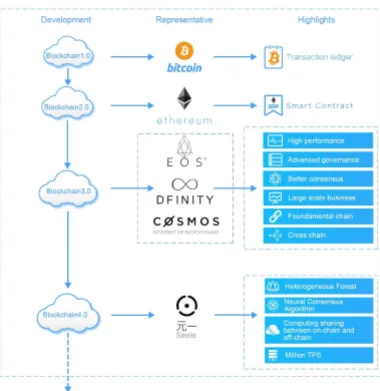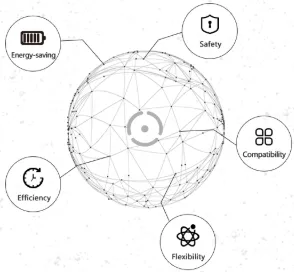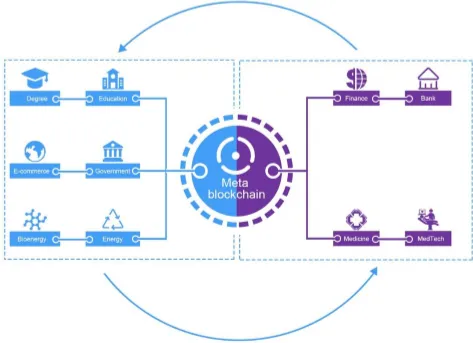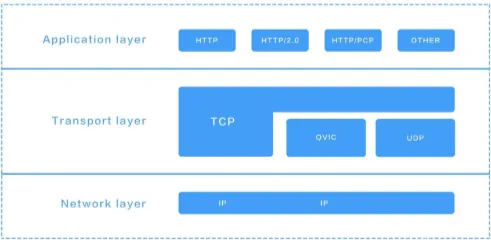
The importance of blockchain technology in today's world cannot be overemphasized. What was formerly tagged as just being used for merely bitcoin has since evolved into something greater, and now disrupting several sectors of the society.
Blockchain technology has been evolving since its inception in 2008. It started out with the blockchain 1.0. The blockchain 1.0 phase involved the implementation of the distributed ledger technology, which led to the very first application of blockchain technology and this gave rise to cryptocurrency. The blockchain 1.0 enabled transactions to be carried out with bitcoin, a decentralized digital payment method.
Due to the dynamic nature of blockchain, the version 2.0 was created. The blockchain 2.0 is a new concept based on smart contracts. The idea of the smart contract was introduced because it enables people to execute transactions and carry out several tasks without the need for a middleman. The smart contracts is a set of computer programs that greatly helps to automatically execute pre-set conditions between parties, and also lessen the cost associated with verification, execution, and adjudication, thereby providing a transparent means of executing contract terms. The Blockchain 2.0 was based on the Ethereum Smart Contracts.
In furtherance, the third generation of blockchain technology came into existence (Blockchain 3.0). The blockchain 3.0 was based on decentralized application (DApp) and improved smart contracts, thereby making use of decentralized storage and communication. This means decentralized applications make use of a decentralized peer-to-peer network to run their backend code as against the centralized servers that normal conventional apps use.
Despite this great development of blockchain technology, it is still discouraging to know that it still hasn't been generally accepted in most economies. This can be attributed to the fact that the typical blockchain networks have some deficiencies which inhibits it from being applicable to business demands. Some of which are low performance, poor scalability, technical difficulties when applying blockchain to business processes, and unavailability of asset sharing between blockchain networks.

Due to this, Seele aims to introduce the fourth generation blockchain that is industry ready. Seele aims to improve on the existing blockchain to provide the fourth generation blockchain that meets the real world industry demands. Seele's aims to make blockchain usable for several real-life business scenarios.
Seele is proposing a model that involves the combination of heterogeneous forests, neural network consensus algorithms, computational power-sharing linking inner and outer chains, and scalable TPS.
The integration of these components will provide a blockchain based business integration.
BENEFITS OF SEELE TO THE ECOSYSTEM
Customers will be provided with highly effective channels of service and easy to use channels to enable the seamless transfer of value.
Developers will be able to design top-notch applications because they will be provided with an enabling environment and the application development will be carried out through superb underlying technologies.
Due to the robustness of the platform, it will support various business operations by making integration flexible, convenient and seamless.
SEELE COMPONENTS
Neural Consensus Algorithm: Seele utilizes neural consensus and ε-differential agreements(EDA) to resolve the issues with the current consensus algorithm. The current consensus algorithm makes use of several algorithms such as PoW, PoS, DPoS to reach consensus. However, the disadvantage of this is that they are not effective, secure and scalable. For example, DPoS only makes use of only a little number of representatives during the decision making process. This creates a centralized system because it means the representatives have the capacity to influence the results.

However, having identified both the good and bad of the current algorithms, Seele is introducing a better and efficient consensus algorithm called the neural consensus and ε-differential agreements. The neural consensus is able to run serially and also achieve high performance because it makes use of linear scalability in accordance with the number of nodes on the network. For example, the higher the number of nodes in the network, the much better the performance of the consensus. In addition, the neural consensus will be able to greatly manage about 40% failed nodes, thereby guaranteeing significant fault tolerance. Seele also utilized the ε-differential agreements because it is able to converge a large network of nodes to reach a consensus based on a specific value.
Heterogeneous Forest Network: As it was earlier stated that Seele aims to make blockchain usable for several real-life business scenarios, it introduced the 'Heterogeneous Forest Network' to achieve this. The forest network consists of several subnets that will enable blockchain to be efficiently and effectively utilized. The subnets of the forest network have been empowered to singly manage any type of service scenarios. In addition, even though the subnets can run independently, they still have the ability to communicate and co-exist via the cross-chain protocol. This makes the Seele platform robust and heterogeneous due to its ability to effectively manage and support different business scenarios.

Value Transport Protocol: Seele utilizes Value Transfer Protocol to address the current challenges that have to do with the transmission of value that the current blockchain networks cannot execute. The typical blockchain networks have a different data model, address system, and transaction mechanism, which has further impeded their coexistence and interaction. As it stands currently, a bitcoin user cannot even share data with an ethereum user.
Seele's Value Transfer Protocol(VTP) will make use of uniform identification of data on the chain. For example, in the naming of an asset, the VTP utilizes a Uniform Asset Identifier to enable easy identification of asset on the chain. Also, VTP also utilizes Value-HTTP protocol to make the exchange of values(assets) between chains very easy and seamless. This simply means even the traditional internet protocol which makes use of HTTP can interact with the VHTTP. In addition to the above features of the VTP, the exchange of value between chains will be effective, efficient, secure and optimized because Seele will make use of a routing cache method.
Quick Value Internet Connection (QVIC): Seele introduces the QVIC to provide instant and much faster internet connection as a better solution to the challenges being experienced due to the current complex network structure of blockchain nodes. This structure greatly affects the consensus algorithm and order the blocks in the nodes. The QVIC will enable seamless transmission of data thereby providing low latency and guarantee the security and efficiency during transmission of data. QVIC's framework will further provide a more honest and truthful TCP transmission data.

Computing Integration: Seele aims to introduce proposing a different computing integration that integrates both off-chain storage and computational resources upon blockchains. This will eradicate the current challenges with the computing resource integration in the chain storage.
CONCLUSION
The combination of all the components will help provide a very solid, high performance and secure platform that will provide the much-needed blockchain based business integration.
Kindly visit https://seele.pro/ for more information.
Whitepaper::https://s3.ap-northeast-2.amazonaws.com/wp.s3.seele.pro/Seele_tech_whitepaper_EN_v2.0.pdf
Telegram: https://t.me/seeletech
Twitter: https://twitter.com/SeeleTech
Facebook: https://facebook.com/seeletech
Writer: Sucre123456
Author's profile link:https://bitcointalk.org/index.php?action=profile;u=1820055;sa=summary